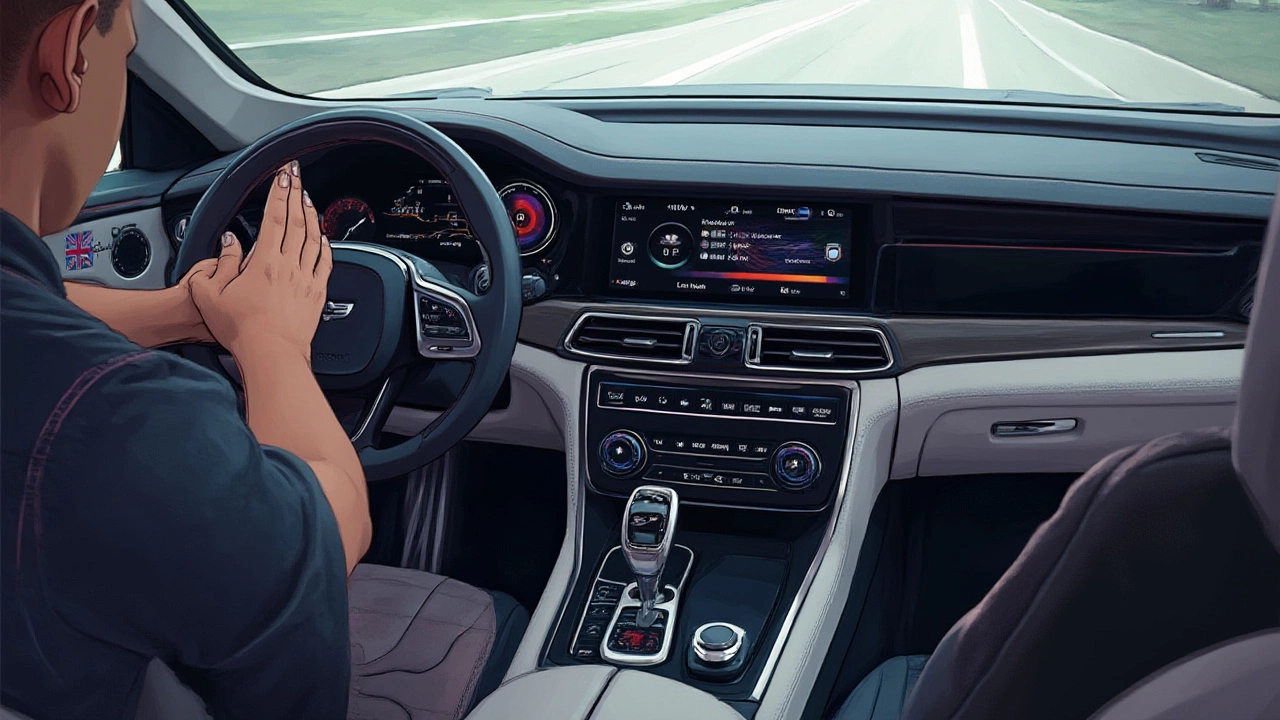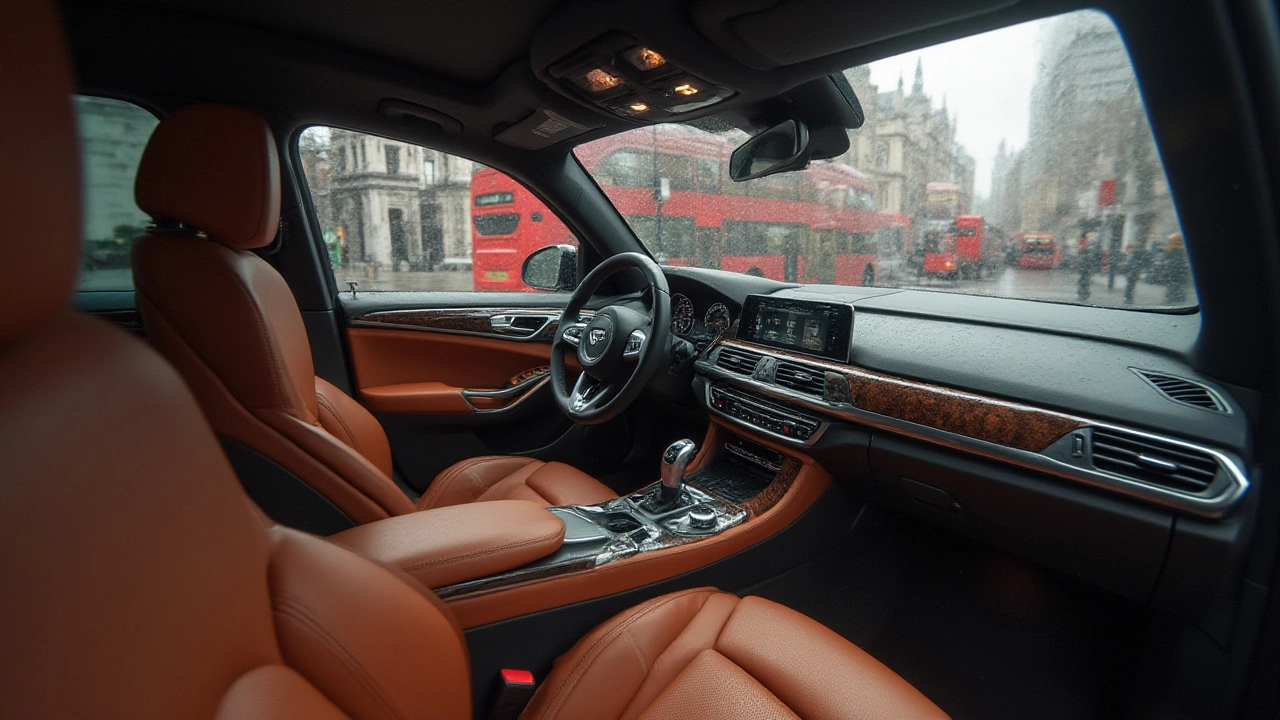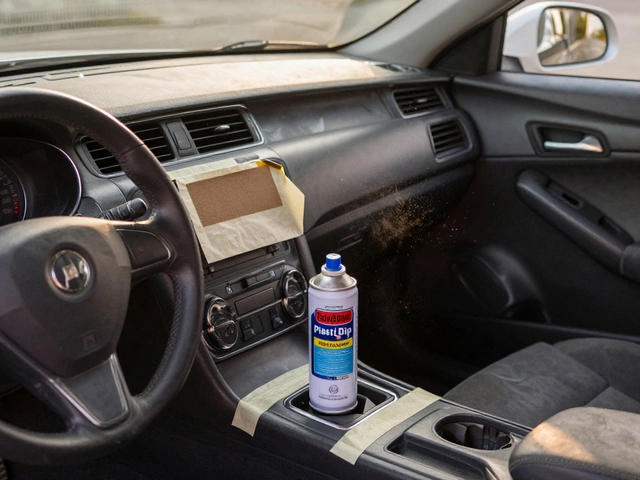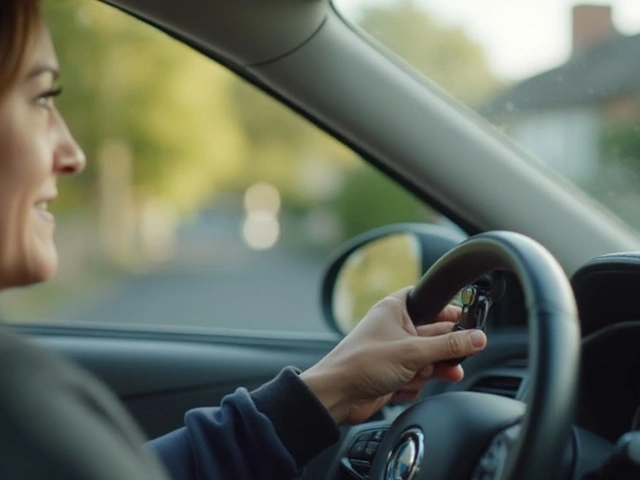If you think your car’s inside should be as unique as your playlist, welcome to the right rabbit hole. Walk through a parking lot and you’ll spot dozens of the same make and model. But peek inside, and here’s where personalities start showing. Some roll with tech-packed rides, others go retro, a few chase pure comfort, and yeah, many just want a cabin that never gets boring. Bottom line, you can absolutely customize your car’s interior—almost as wildly as you dream—but how you do it makes all the difference in how it feels, looks, and even what your car is worth at trade-in time.
What Can You Actually Customize Inside Your Car?
Forget the idea that car interiors are stuck as they rolled off the lot. There’s a laundry list of things you can swap, upgrade, or totally redesign. Start with the seats: swap out basic factory cloth for hand-stitched leather, high-tech vegan suede, or contrast-piped racing buckets. Steering wheels? Yep—you can go smaller, thicker, suede-wrapped, or fit heated wheels for those rough winter mornings.
If dashboards are your thing, you’ll find endless upgrades. From carbon-fiber overlays to digital gauge clusters that look like they belong in a spaceship, this area is begging for a personal touch. Add LED mood lighting around the cup holders, or swap in illuminated trim panels that glow with the color of your phone’s app icons.
Don’t sleep on the little stuff, either. People personalize shift knobs, pedals, door handles, floor mats—they even trick out air vents with custom rings or OLED displays that show cabin air quality. Headliners, pillars, sun visors, and even seatbelt colors can all get the custom treatment. A surprising fact: Some custom interior shops offer starlight headliners, installing hundreds of fiber optics in the headliner to mimic a night sky. It’s next-level cozy.
Sound systems and infotainment take up the big-money customization slot for many. Swap factory speakers for multi-amp high-output setups, drop in subwoofers deep enough to rattle your fillings, or tuck Bluetooth touchscreens into even older models for that connected-car experience. Navigation, rear-seat entertainment, and even integrating smartphone controls for climate and music—if the tech exists, someone can integrate it into your cabin.
All these options, though, come with trade-offs. Not everything works or fits every car, and there’s always the warranty to think about. Go DIY with some parts, professional for others. Some upgrades are plug-and-play, others need real skill—think running wires or programming computers. So, your choices come down to budget, priority, and the vibe you want every time you drop into the driver’s seat.
Top Trending Custom Interior Ideas in 2025
Customization changes as fast as your phone software. Back in the 90s, seat covers and fuzzy dice ruled the scene; today, people want their cabins to look like a blend between a lounge and a comic book universe. Minimalism is big right now: smooth lines, hidden tech, soft-touch surfaces, and matte finishes are the new flashy chrome and wood. Think Scandinavian-inspired trims, natural fabrics, and climate-neutral leathers.
But if you’re a tech lover, 2025 doesn’t disappoint. Ambient lighting is everywhere—not just footwells, but dash lines, door pockets, and even behind the vents. Smart fabrics that change color or greet you with personalized messages are popping up, especially in luxury builds. Phone charging surfaces are becoming standard, even retrofitted into older rides. Voice-activated controls for lighting and sound let you command your car like Tony Stark.
One wild trend is the rise of modular seats. Imagine switching from family road trip config to full-on cinema mode in minutes, with seats sliding and swiveling as needed. This used to be dream stuff shown at car shows, but now you can order swiveling seat bases, aftermarket seat heating/cooling kits, or even massage modules for long commutes.
For those who like a story in their car, custom embroidery or laser etching lets you put your initials, favorite quotes, or even a map of your hometown right into the seatbacks or door panels. It’s subtle, but attention-grabbing. Mixing materials also gets bigger every year—natural wood next to aluminum, or even glow-in-the-dark piping for that after-dark wow.
Let’s not forget the shift to sustainability. Eco-friendly interior mods are in demand: recycled plastic panels, reclaimed shipwood dashboards, or vegan leathers rival genuine hides for feel and look, minus animal guilt. Even high-end rides want that green street cred, so you’ll find nifty certifications stitched right into custom seats.
You might be surprised by this: Data from SEMA (the Specialty Equipment Market Association) in 2024 pointed out that interior accessories made up 30% of all car modifications globally, beating out both body kits and wheels. Custom interiors aren’t just vanity—they’re big business.

The Process: From Inspiration to Installation
If you want to go from a bland cabin to something you’ll brag about, you gotta plan—but no need to be a design expert. First, figure out what bugs you about your current interior. Is it the outdated tech, boring colors, uncomfortable seats—or are you just chasing a new vibe? Jot these down, browse photos from auto shows, custom shops, or Instagram, and you’ll start seeing what fits your taste.
The next step: budget. Custom interior jobs run the full spectrum, from $50 for a custom shift knob to north of $15,000 for a full top-to-bottom makeover by an elite shop. According to Kelley Blue Book, average seat reupholstery in premium materials comes in at $2,500–$4,000 for all seats. Fit and finish, though, are everything—a rushed job will stick out every time you drive.
Here’s a smart way to go about it:
- Start with easy, reversible upgrades first (like floor mats, seat covers, colored trim rings).
- Move onto high-impact, high-value upgrades like steering wheels, shift knobs, or dash overlays.
- If you plan to keep the car long-term or want a ‘show’ look, consider pro-level upholstery or new dash tech.
- Document every step, keep receipts—especially for warranty or resale down the line.
- Work with trusted shops for electrical or safety system work; airbags, wiring, or seat sensors aren’t worth risking on DIY.
A big tip: Always check your car’s wiring diagrams if you plan to mess with anything electronic. Modern cars have “smart” systems, so tap the wrong wire and suddenly your seat heater thinks it’s a child-sensor alarm. The right tools matter too—plastic prying tools for trim, quality torque drivers, and heat guns save headaches and broken panels.
And yes, even the pros can hit snags. Custom materials may not ship right away. Expect longer timelines for hand-built orders or if you pick rare materials. Plan for your car to be out of commission a few days if you want extensive work.
Custom Interiors and Resale Value: Be Smart, Not Sorry
This is where people get nervous. Will swapping your car’s beige interior for purple leather and neon lighting trash its resale value? Yes—and no. Unique tastes can make selling tricky unless you find a buyer who loves your style choices. On the flip side, expert jobs in classic styles (like black leather or tasteful trim upgrades) often increase custom car interior appeal and keep value high.
OEM-plus is the sweet spot: Think upgrades that look like they could’ve come from the factory. Leather-wrapped panels, subtle stitching, upgraded sound—car buyers want comfort and tech, not wild gimmicks. But if your ride is a collectible or tuner car (say, a classic Mustang or JDM import), smartly done custom interiors can sometimes double the asking price. Go overboard, though, and you’ll shrink your buyer pool fast.
Insurance is a curveball many forget. Major custom work often needs declaring on your policy otherwise, if you’re ever robbed or in an accident, you could be out those custom seats and sound system upgrades with zero compensation. Some insurers even offer “agreed value” policies based on all your upgrades, so keep every invoice handy.
Here’s a quick cheat sheet to balance style and value:
- Stick close to popular color palettes if you plan to sell later (black, grey, brown, beige).
- Go bolder if the car will stay in your garage for years or it’s more about show than go.
- Quality over quantity: Gun for perfect stitching, flawless trim fit, and clean finishes.
- Always keep original parts! Someday, you or a buyer might want to revert.
For some confidence, take a look at data from Autotrader’s 2025 market report showing cars with professionally upgraded interiors held 9% more value at resale—if the work was subtle, high-end, and well-documented.
| Interior Upgrade Type | Avg. Cost (USD) | Common Resale Impact |
|---|---|---|
| Custom floor mats | 65-150 | Neutral |
| Seat reupholstery | 2,500-4,000 | Positive if classic style, negative if wild color |
| Ambient lighting | 300-1,500 | Small positive |
| Custom dashboard | 800-5,000 | Neutral if well-executed, negative if poorly done |
| Sound system upgrades | 500-8,000 | Slight positive for quality upgrades |

Pro Tips to Nail Your Dream Interior
Before you swing out the screwdrivers and custom order metallic orange seatbelts, hear me out. A killer interior has a flow—the colors, textures, and sometimes even the scents are all part of the whole. Ever sat in a car that smelled like cheap plastic or looked like a discount fireworks shop? Not the vibe you want.
Decide on a theme and stick with it. Vintage European, sport luxury, tech-heavy or minimalist—mixing styles can get busy fast. Draw inspiration from car shows, high-end manufacturer options, or classic movie cars (check out the ‘Blade Runner’-like Toyota Celsior builds popping up lately).
Lighting is huge in setting the mood. DIMMABLE LED strips give you control and let you go subtle or full night-club mode. Be careful with colors: Too many and you’ll feel like you’re on a kids’ ride. Two or three coordinated hues max will always look grown-up.
Materials deserve respect. There’s nothing wrong with OEM cloth or vinyl, but if you’re going premium, hunt for suppliers who do real Alcantara, hand-stitched leather, or new sustainable fabrics. Avoid knock-offs; they age fast and can even affect allergies or smell after a summer in the sun.
Invest in real soundproofing. Aftermarket kits for doors and floors slash road noise and make even a modest stereo sound better. Also, protect your new interior. Tinted windows, ceramic coatings for surfaces, and weatherproof mats keep your hard work looking fresh year after year.
Don’t forget little hacks to keep your interior practical: stow-away organizers, wireless charging pads, or even a collapsible trash can behind the center console. Custom gear doesn’t mean sacrificing day-to-day usability.
And here’s a gold tip—Snap before, during, and after pics, save swatches, and log every mod. If you ever want to sell, trade, or just brag online, a detailed record is your best wingman. Plus, it makes a fantastic story when someone asks, “Where did you find this interior?”




